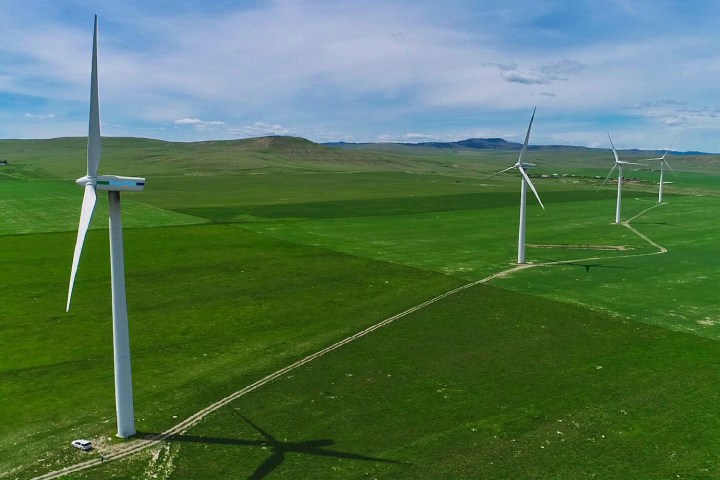
Could an algorithm make wind turbines more productive? It sounds crazy, but the answer turns out to be a resounding “yes.” Researchers at Stanford University recently used a proprietary optimization algorithm to model the most efficient yaw angle for turbines. The yaw mechanism in a wind turbine is used to turn the wind turbine rotor against the wind. To ensure that a turbine produces the maximal amount of electric energy, a yaw drive keeps the rotor facing into the wind as the wind direction changes.
The algorithm developed by the team took into account a half decade of information on wind speed, wind direction, and power generation from six turbines. This data was then combined with a wind model. It suggested that the most efficient way to gather maximal energy from a series of wind turbines would be for the yawing of several of the turbines to be positioned 20 degrees off the wind. This was then tested out on a real Alberta, Canada, wind farm. It illustrated how, by working together, wind turbines can generate more energy by effectively “sharing” the wind.
“We’ve demonstrated that the power output of wind farms can be improved by turning some of the turbines so that they’re facing slightly away from the wind,” John Dabiri, a Stanford fluid mechanics expert who worked on the project, told Digital Trends. “This causes the choppy air created by upwind turbines to be deflected away from the downstream turbines. The upwind turbines lose a little power, but the farm as a whole can produce significantly more power.”
The ultimate goal of the “wake steering method” project was to increase the efficiency of wind farm power generation, so that wind energy could play a more vital role in helping wean us off our current reliance on fossil fuels.
“This first project focused on six wind turbines, to demonstrate that the idea works while limiting the risks associated with a new technology,” Dabiri continued. “The next stage will involve tests on larger groups of turbines, including entire wind farms.”
A paper describing the work, titled “Wind farm power optimization through wake steering,” was recently published in the journal Proceedings of the National Academy of Sciences.


